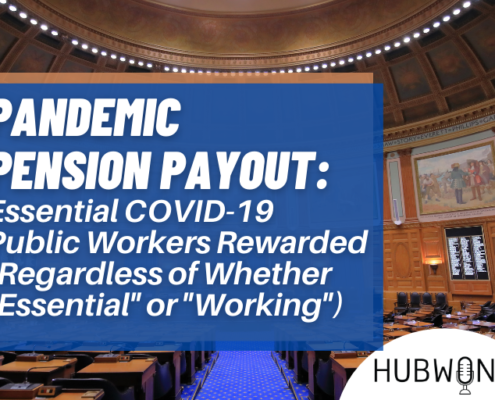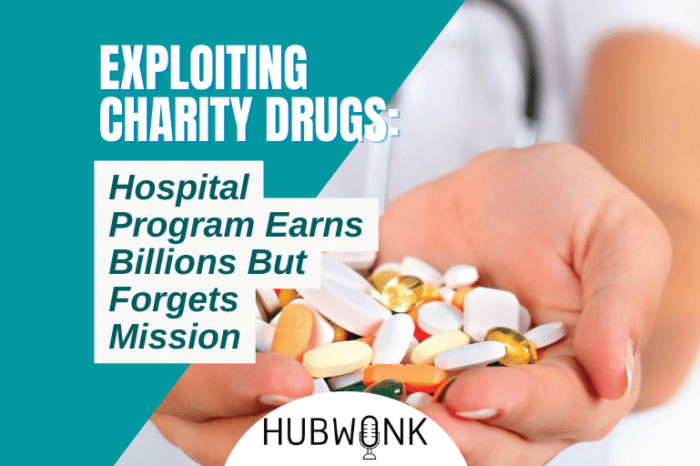Exploiting Charity Drugs: Hospital Program Earns Billions But Forgets Mission
/in Blog: Healthcare, Featured, Healthcare, Podcast Hubwonk /by Editorial StaffHubwonk host Joe Selvaggi talks with Pioneer Institute’s Dr. Bill Smith about his recently released paper entitled, “340B Drug Discounts, An Increasingly Dysfunctional Federal Program,” which analyzes the evolution of a well-intentioned program to offer discounted drugs to the uninsured from a benefit that had helped charitable hospitals to one that has exploded to generate billions in profits while serving fewer uninsured.
Guest:
 William S. Smith is Senior Fellow and Director of the Life Sciences Initiative at Pioneer Institute. He has 25 years of experience in government and in corporate roles, including as vice president of public affairs and policy at Pfizer, and as a consultant to major pharmaceutical, biotechnology and medical device companies. He held senior staff positions for the Republican House leadership on Capitol Hill, the White House, and in the Massachusetts Governor’s office. He earned his PhD with distinction at The Catholic University of America (CUA).
William S. Smith is Senior Fellow and Director of the Life Sciences Initiative at Pioneer Institute. He has 25 years of experience in government and in corporate roles, including as vice president of public affairs and policy at Pfizer, and as a consultant to major pharmaceutical, biotechnology and medical device companies. He held senior staff positions for the Republican House leadership on Capitol Hill, the White House, and in the Massachusetts Governor’s office. He earned his PhD with distinction at The Catholic University of America (CUA).
Get new episodes of Hubwonk in your inbox!
Read a Transcript of This Episode
Please excuse typos.
Joe Selvaggi:
This is Hubwonk. I’m Joe Selvaggi.
Joe Selvaggi:
Welcome to Hubwonk, a podcast of Pioneer Institute, a think tank in Boston. In 1992, a well-intentioned targeted program named 340B required pharmaceutical companies to provide eligible hospitals with drugs at a substantial discount for the benefit of uninsured patients. Those hospitals were then to use any savings and profits from the program to provide comprehensive services for the poor and uninsured since its inception. However, healthcare systems have exploited the statutes guidance to re billions in profits by purchasing 340B drugs at a discount, and then selling those deeply discounted drugs to insured patients at retail prices. Perhaps more disturbing is a trend that while 340 B program profits have so access to discounted drugs and charity programs for the uninsured have been in steady. The numbers involved in this distorted drug program are staggering. Now exceeding the value of both the Medicaid drug benefit and Medicare part D how did this worthy program get so distorted and how can policy makers reform 340 B in a way that realigns incentives to better serve the uninsured?
Joe Selvaggi:
My guest today, Pioneer Institute’s senior fellow in life sciences, Dr. Bill Smith, who will talk about the findings of his recently released paper entitled “340 B discounts: An increasingly dysfunctional program.” In the paper, Dr. Smith describes the arc of how this well-intentioned program seems to have lost its direction and grown to generate massive profits for hospitals while sign simultaneously reducing drug benefits and charity programs for the uninsured, Bill will offer his views on what legislatures can do to realign program incentives, to better guarantee the uninsured receive their drug benefits and ensure the profits from the program go toward our poorest citizens. When I return, I’ll be joined by Pioneer Institute’s Dr. Bill Smith.
Joe Selvaggi:
Okay. We’re back. This is Hubwonk. I’m Joe Selvaggi, and I’m pleased be joined by Pioneer Institute’s visiting fellow in Life Sciences, Dr. Bill Smith. Welcome back to Hubwonk, Bill. Thank you, Joe. Glad to be here. Great. Well, bill, I found your recently released Pioneer report entitled 340B Discounts: An increasingly dysfunctional program. I found it somewhat alarming. I want to set the stage for our listeners that we’re talking about a federal program designed to help low-income uninsured people with medication. And it’s largely been exploited by the medical community to reap literally billions in profits with little of those billions going to, to where the statute was intended. So there’s a lot to unpack in your paper. So let’s start with some history. Let’s start at the beginning. What was the original idea behind 340B? And when did the program begin?
Dr. Bill Smith:
Well, it, it actually didn’t begin as a federal program. It just began when a number of drug companies, many drug companies actually started giving deep discounts to hospital that treated a large number of uninsured, low income patients. The drug companies knew that those hospitals would, were struggling financially. And so they made voluntary concessionary discounts available to them. And in 1992, the federal government decided the Congress decided, well, we’re, we should, we’re gonna make this program mandatory. So we’re gonna require the drug companies give discounts to hospitals to treat large numbers of low income or uninsured patients. And, and, you know, the program started out fine. I would’ve supported it in 1992. It, it, it targeted about 500 hospitals and clinics around the country. It was limited and, and it was largely limited to, to those hospitals and, and clinics that did treat large numbers of low income uninsured, but starting in about 10, 15 years ago, the program absolutely exploded.
Dr. Bill Smith:
You become eligible as a hospital for, to become eligible for these three 40 B discounts based on the number of patients, you Medicaid patients, you treat the federal government and the Congress thought that’s a proxy for your treating low income or uninsured patients. And when they expanded the affordable care act and Medicaid exploded in the number of patients, many, many more hospitals became eligible. So the program started out about 500 hospitals that now has about 2,500 hospitals. And those hospitals have expanded to satellite offices. So they’re now 37,000 covered entities in the program.
Joe Selvaggi:
So your your paper does suggest that much of the reason has exploded. And the eligibility has expanded is owed to the vaguery of the, the statute. You know, as you mentioned in your paper, it was originally designed to target quote unquote covered entities, but left it to the, the system itself to infer who was covered, say more about how these vagaries are easily exploited.
Dr. Bill Smith:
Well, let me first explain why the program is so popular with hospitals and why it exploded. So under the three 40 beat program, you can get a substantial discount when you purchase a drug. So let’s say a hospital just to, to make it simple. A hospital can, can purchase an oncology drug for $25,000. When this price of that oncology drug is a hundred thousand dollars. So they’re getting a 75% discount. So if you, as a, as a hospital administrator can lure into your hospital or to your satellite office, a patient that’s that has insurance and is wealthy. You can dispense that drug to that patient for $25,000, and then bill his insurance company, or Medicare for a hundred thousand dollars, and you can pocket the $75,000 spread. It, it, this is basic arbitrage. It, it happens in many areas of business, but this three 40 B program is now being arbitrage. And the, the statute getting back to your original question, the statute was written in poorly. So the program is not limited to only dispensing drugs to low income patients or in low income neighborhoods or to uninsured patients. So it there, the statute didn’t define anything about who’s eligible for the program and who might share in these, these dis drug discounts.
Joe Selvaggi:
I see. So now you said as growing substantially since its inception in your first answer, you did say the original program used medicaid patients as a proxy for implying that hospitals located where there are lots of Medicaid recipients and in inferred from that that there also must be lots of charity cases. Describe for our listeners, where were these original three 40 B participant hospitals, where have they, you know, sprung up now? Who, who who’s joining the system from where it used to be?
Dr. Bill Smith:
Yeah, so originally, Joe, that’s a good question. Originally these hospitals and clinics were in low income areas, both rural and urban areas that treated large numbers of low income patients. But since 2004, there’s a substantial data to suggest that a lot of these hospitals and their satellite offices are being located in wealthier areas that have higher rates of insurance. And, and that’s part in part due to the fact that they can arbitrize the drug discounts. So they wanna get patients in there that have Medicare or commercial insurance coverage as then they can bill for the full price of the drug, why they buy the drug at the discount.
Joe Selvaggi:
Now, your paper we, we’re talking about a program that was originally intended to help people who didn’t have insurance now in the, in the in the meantime, we’ve passed the affordable care act, it’s stated intent and it’s effect, I think has been to have more people become insured, both low income or people who had formally been on Medicaid or uninsured altogether. So if we have fewer people who would be in theory eligible for three 40 B benefits, did we see a decrease in the amount of three 40 B activity once the affordable care act was implemented,
Dr. Bill Smith:
Joe, just the opposite, you know, in 2012, there were only, there were 54 million people covered under Medicaid. And this year there are 83 million people covered under Medicaid. So the number of people insured has grown substantially. The number of uninsured has dropped dramatically. One would’ve expected given that the three 40 B program was supposed to treat the uninsured one, would’ve expected that the three 40 B program would’ve declined over the past decade, just the opposite that’s when it had its most explosive growth over the last decade. So it’s up to about 38 billion in sales and the three 40 B program will soon eclipse in size, both the Medicaid prog drug program, which has 83 million recipients and the Medicare Medicare part D program, which has over 50 million recipients and their senior citizens who tend to use a lot of drugs. So this, we made the longish talking about a three 40 B program that nobody really knows about, but it’s now the largest federal drug program in the, in the United States.
Joe Selvaggi:
Yeah, the numbers are staggering when you compare it to what we already consider fairly costly programs, Medicaid and Medicare part D to eclipse those programs is, is, is saying something. So I think that’s why this, this a program deserves our attention now. Let’s set aside that despite the fact that the ACA is, has more people insured and therefore one would think the byproduct of that would be fewer three 40 B claims. They went up. So that means hospitals were generating more money from this program than they had before the ACA another feature of that three 40 B, I don’t think we’ve addressed is that the program was supposed to help hospitals use the savings they get from those discounts and apply those to programs for charity. In other words, there chart supposed to take the benefit and apply that benefit to charitable patients. Have we seen an increase in the amount of money that hospitals are given to charity owing to their, you know, this windfall of, of a program?
Dr. Bill Smith:
Yeah, Joe, just, just the opposite. We’ve seen charity care decline, and it would’ve been very difficult for me to write a paper are critical of the three 40 B program had the billions of dollars that this program is generating, been devoted to programs for low income and uninsured, but that’s just not the case. I, I don’t wanna pick on mass general because they’re excellent hospital. They’re part of the whole life sciences ecosystem here in, in, in the greater Boston area. But in 2013, they were spending 3.8% of their revenues on charity care for low income people. And in 2020 that dropped to 1%, it’s been a straight line down as it has in many hospitals. And at the same time, they’re, we know that they’re expanding their three 40 B presence. They, they had one pharmacy dispensing their, their three 40 B drugs in 2017.
Dr. Bill Smith:
They now have 132 pharmacies ex dispensing their three 40 B drugs. So we know the revenues are growing. They’re not required to disclose the amount of revenue they’re getting from three 40 B, but it must be explosive if you’ve gone from one pharmacy to 132 pharmacies and mass general has expanded. They have offices now in some of the wealthiest towns in, in Massachusetts, Wellesley Concord, Walham Newton they even have offices in Nashville, New Hampshire and York Maine. So part of the reason for this growth is that they can leverage these three 40 B discounts in these areas. So it’s, it’s a troubling thing, particularly because the charity care numbers have been declining.
Joe Selvaggi:
I found a striking feature of your paper in that that originally the three 40 B was going to hospitals that did more charity work. Your paper are points to the research that indicates that what these newer hospitals, these bigger hospitals, I don’t wanna throw the mass general under the bus, but when compared with those hospitals that don’t participate in three 40 B in theory, those that don’t do substantial charity work, there’s actually less charity work being done in three 40 B hospitals. Then there are, and three 40 B hospitals, which is to say, there’s no correlation between one’s inclination to exploit three 40 B and one’s inclination to serve charity cases. This is very troubling. Say more about this phenomena.
Dr. Bill Smith:
Yeah, that’s, that’s precisely right that their, their are studies to suggest that three 40 B hospitals give less charity care than either government or for profit hospitals. And one would expect given the revenues that are generated from three 40 B program, which are estimated to be 40 billion for these hospitals, that the, the nonprofit three 40 B hospitals would be dispensing much more charity care, but the data suggests that’s not true.
Joe Selvaggi:
Well, you break down three types of hospitals, I suppose. I’ve never thought of this way, but there’s for profit, nonprofit and government. So for profit is supposed to be the bad guys, I suppose, in a, in a modern narrative nonprofits, the good guys your paper suggests that nonprofits are in measurable terms, doing the least amount of charity work when compared with for profit and go from in hospital, say more about that data.
Dr. Bill Smith:
Yeah. And I don’t want Joe, I don’t wanna cast the, the, I don’t wanna paint with too broad a brush here because we did find hospitals in urban areas in the Boston area, such as Boston medical center and Cambridge hospital Everett hospital that were, they were giving out a huge amount of charity care, you know, more than 10% of revenue, some years unlike mass general and, and, and UMass Memorial in Wooster and bay, state, and Springfield where the numbers are closer to 1%. So it there’s some hospitals in clinics that are really doing the Lord’s work when it comes to charity care. And so I don’t wanna paint with two broader brush, but on average charity care has been declining at these nonprofit three 40 B hospitals, which one would not have expected given the growth in the program.
Joe Selvaggi:
Sure. And you mentioned briefly that the the, the 340 B programs are, are branching out to smaller more affluent communities, but you know, local community physician groups themselves, how does the three 40 B program interfere with community physician practices?
Dr. Bill Smith:
Well, to be Frank, the hospitals are just buying up community based per practices. 51% of the community based oncology practices are now vertically integrated into a hospital system because they’ve been bought up. And the reason they’ve been bought up is obvious because in neurology and, and oncology, and, and in those specialty areas where you you’re dispensing expensive drugs the, you can keep the spread as a hospital system. And arbitrize the, the three 40 B discounts when you purchase an oncology practice and bring in a huge amount of revenue. So this is troubling because people like community based practices, they don’t want ’em to see their local community physician practice being bought up by a hospital. But it’s also the case that once these, these practices are bought up, there is an incentive not only to prescribe more drugs, but to prescribe more expensive drugs, because you’re going to be able to leverage those discounts. So it, it, it’s not great all the way around. And and you know, the, the, the oncology community is well aware of this problem. And, and they’ve been fighting back trying to avoid these, the purchase of these, some of these community based clinics.
Joe Selvaggi:
So if I’m someone who enjoys you know, a community physician practice somebody say, oh, I I’m in different to who owns, or how in vertically integrated my system is my doctor is, but what your paper points out is once it does join this integrated system, everything in that practice becomes substantially more expensive, not unlike where that practice to move into the city. The, the drugs, the physician visits, all go up in price. And you also mention in your, in your remark that given that the hospitals arbitrage, the difference between what a it’s, it’s a percentage base the more expensive the drug, the greater the discount, the greater, the profit, there’s a, a clear incentive to raise drug prices based on the difference between the retail and the three 40 B discount.
Dr. Bill Smith:
Yes. And, and, and again, it’s not just drug prices that go on overall healthcare costs in the hospital setting is, are more expensive generally. And so you know, I’m very sympathetic to hospitals. My sister’s a hospital administrator in New York, and I know it’s a difficult business, but it is more expensive to treat somebody in a hospital setting or a hospital satellite office than in the com community based physician practice. That’s just the reality. And so this expansion of hospitals into wealthy suburbs is gonna drive up healthcare costs and is driving up healthcare costs.
Joe Selvaggi:
So I sort of the icing on the keg before we shift gears into what you recommend as perhaps a, a useful remedy for many of these perverse incentives you, you describe a case whereby when combined with a Medicaid rebate, a drug company that sells a drug. I think you use a, a, you know, for instance, a hundred dollars drug that winds up costing the, the manufacture money to sell the drug, which seems unbelievable. But you know, many people like to trash to the reputations or, or incentives of drug companies, but to have a system whereby a drug company loses money for every pill sell to say more of how three 40 B and the Medicaid rebate might combine to make a negative a margin.
Dr. Bill Smith:
Yeah. So it’s, it’s, it’s simple, it’s called, it’s a problem called duplicate discounts, which were banned in the original statute. It’s actually a violation of federal law for a pharmacy to, to obtain duplicate discounts. So let, let’s say you you get it, you buy a drug at, at $25 which is the 340 B price. And then it, the, the patient goes to the pharmacy and the, the drug is purchased. And then the pharmacy bills, the drug manufacturer for a $35 rebate, the, the company now has just lost $10 on that sale because the they’re getting bill the three 40 B discount as well as a Medicaid rebate. And this is a common problem. It’s in the hundreds of millions of dollars, probably that these duplicate discounts happen every year. And it, again, it was banned in federal law. And one would think with our current software systems, they’d be able to solve this problem, but they haven’t and inspectors general, and also sorts of people, the justice department, others have, have come back and said, you gotta solve this problem, but they have not.
Joe Selvaggi:
Indeed, indeed. All right, so let’s, let’s stop piling on we, we established a three 40 B has created some perverse incentives and those of us who pay into this health system are all poorer for it. Let’s figure out how to, what you would recommend as, as reasonable steps towards finding some remedy or solution to this first. You you would recommend that we require hospitals to revol report three 40 B revenues. It seems odd, odd that we don’t already do that, but say more about why that’s important.
Dr. Bill Smith:
Well, that’s important because they, they do report. Although the definition of charity care needs to be tightened up, they do report in their Medicare cost reports, the amount of charity care that they dispense. So if we knew what they were securing in revenue from the three 40 B program, we could compare that with the amount of charity care that they’re giving out each year. And one, one would expect there’s a great disparity between the two numbers these days. And, you know, the transparency might shame them into spending more on charity care, which would be a good thing.
Joe Selvaggi:
Indeed, indeed. Now those presumably the it’s a positive number, the difference between the money they get from three 40 B and the money they give in charity care you would want to, your second recommendation is to require those covered entities to spend that money, that profit on charity care. That seems reasonable. Is that what you’re saying?
Dr. Bill Smith:
Yeah, that’s a, it’s a more directive than just the transparency option, but you could require that all revenue that’s secured from through the three 40 B program must be spent on community programs that serve low income and uninsured patients it’d be that simple. Right now we don’t know where all that revenue goes. It could go to hospital salaries. It could go to who knows, could be go to expanding the building. We, we don’t know where the money goes now. And requiring it to go to charity care would be a, a boom to charity care around the country.
Joe Selvaggi:
Indeed. That’s how it was intended. So it ought to go to the charity. You also want to better define who is eligible for the discounts and, and the charity care, which you addressed early in the paper that remarkably it doesn’t specifically define who should be eligible.
Dr. Bill Smith:
Yeah, I, I’m not sure why a three 40 B drug should be given to a millionaire in Wellesley. I just don’t, I don’t think that fits the, the, but that is happening. That is happening now. I, I don’t think that fits the original spirit of the program and the statute needs to be tightened up, so that doesn’t happen
Joe Selvaggi:
Indeed. And, and that that’s a, that dovetails well, well, with the next point, which disqualified three 40 B child sites, because satellite sites were using that term in wealthy communities. I’ll just say, let me qualify this. I’m sure there’s some low income people in wealthy, probably not many, but we keep going there. But let let’s, let’s say let’s use that example again. Why, why would we disqualify the three 40 B sites in, in wealthy communities? Well,
Dr. Bill Smith:
You, you know, charity care arises many times spontaneously, you know, it’s, it’s the homeless person who finds himself in the emergency room and doesn’t have insurance and, and the hospital has to eat the cost of that care. And so if you’re locating your satellite offices in wealthy neighborhoods where people have higher rates of insurance, you’re not gonna get that spontaneous charity care happening. So I, I think they ought to limit the, the places where these three 40 B sites can be to areas that are considered somewhat impoverished in the United States. And I, I don’t want to come up with an exact definition of impoverished, but it should be an areas where you are gonna get those walk in patients who aren’t insured and are very low income. And that originally when they first enacted this program that was happening, these, these, these hospitals and clinics were located in these areas. And there are some that are still located in these areas, but with the expansion they’ve more and more expanded this program into wealthier area is they have higher rates of insurance.
Joe Selvaggi:
And I think on the flip side of this is your next recommendation, which is not, not only define who is eligible, but when we’d say let’s take that money and give it dedicated to charitable programs, we should define what charitable programs look like and what community programs look like. We, we still haven’t done that.
Dr. Bill Smith:
Yeah. The definition’s not as tight as it should be. So for example, if a middle class patient comes in and they owe a deductible or a co-insurance payment on whatever treatment that they were given in the hospital and they never pay that, is that charity care. Well, some, some hospitals do define it as charity care because they’re eating the cost, but the patient is probably can afford the co-insurance payment and chooses not to pay it. So maybe it’s not charity care. I just think they, they should tighten the definition so that these are programs that are serving underserved populations.
Joe Selvaggi:
Also of course, want to reform how hospitals become eligible for this program. You wanna reform the disproportionate, share hospital, eligi eligibility requirements for the program and a sense, I think you’re implying that some hospitals ought not to even be in the program.
Dr. Bill Smith:
Yeah. You know, as, as we discussed, you know, when the affordable care act expanded Medicaid drug, I think it’s, it’s 11.75% is the, the percentage of Medicaid patients that you treat, you become eligible for it to become a three 40 B hospital. Once you cross that 11.75 threshold. And it’s clearly the case that some hospitals have lure in Medicaid patients to get to number obtained three 40 B status, and then not gone further their, their Medicaid patient numbers are still at that level. So they’re gaming the system to some degree, not all hospitals, but some hospitals, for sure. So I, I think they ought to look at Medicaid as a proxy for treating low income patients. I, I’m not sure is, is a workable definition any longer given the expansion of Medicaid. And they may be ought to look at other numbers like how much charity care they give out that that could be a threshold that, that makes you eligible for three 40 B status.
Joe Selvaggi:
That would be something to, to earn that status based on how much good you do rather than, and how many Medicaid people you lure in
Dr. Bill Smith:
Precisely.
Joe Selvaggi:
And the final one. I’m, I’m not sure, I, I know precisely why this is a benefit, but you suggest we should convert three 40 B programs from discounts to rebates. I guess there must be, then it must be conditioned that rebates conditioned on proof that it’s being used for the right thing. Yeah.
Dr. Bill Smith:
It’s, it’s complicated, but the rebate system would avoid the problem that we discussed with duplicate discounts, because you could, you’d have a little time to figure out who was a Medicaid patient and who wasn’t before you wrote the check who was getting a three 40 B drug and who wasn’t. And so the rebate system would help, would help solve that problem. It it’s a very, the pharmacy transactions are extremely complicated. But I’m told by people who know them well, that a rebate system would, would solve the duplicate discount problem.
Joe Selvaggi:
All right. So those are your recommendations. But our listeners may think, okay, this is fine, but you know what? We’re here in Massachusetts. We’re the good guys. Our hospitals are above reproach. But you name names in the end of the report and not all Massachusetts hospitals come out wearing the white hat, I guess. So let’s let’s name names, and talk about where, where we see problems and where we’ll call out. Some other hospitals for are doing a, a terrific job. But before we name names how do you measure you, you, you, you, you talk about in your report, who’s really not using the money for charity work. How do you measure charity care provided in a given system, in any given hospital?
Dr. Bill Smith:
Well, in our we looked at Medicare cost reports that hospitals have to file every year with CMS, the, the federal Medicaid, the Medicare Medicaid agency, and they’re required to report their charity care numbers based on their revenues. So what we did in the report is we, we picked five hospitals, randomly. We picked by geography. We wanted to see how across the state charity care was being given out. So we picked mass general in Boston. We picked UMass Memorial in Worcester. We picked bay state in Western mass. We picked Berkshire hospital system in the Berkshires and south coast hospitals in, in, in the, on the Cape. And what we found is those, those hospital systems were not PA picked in advance based on their charity care numbers. We hadn’t even looked at the charity care numbers, but what turned out to be the case is for all those five hospital systems that charity care numbers are a straight line down from 20 13, 20 14 to, to this year. So, so that’s a problem. And again, we didn’t wanna dust up all hospitals. So we looked at the numbers and we found there were, there were hospitals like Boston medical center and Cambridge hospital and Everett hospital that were giving out large amounts of charity care based on revenue. So again, I, I don’t wanna paint with too broad a brush, but in our random sample, based on geography, all the charity care numbers were down.
Joe Selvaggi:
So let’s put that in the enumerator, the denominator then is, is how much the program has grown in Massachusetts. You said some numbers, I don’t know if you have them, your fingertips, how in the last eight, 10 years the money’s grown, you’ve established that the money given to charity by those hospitals from the 340 B has been going has been going down, but the revenue coming in from 340 B has grown, can you put a, a fine point on how much it’s grown in Massachusetts?
Dr. Bill Smith:
Well, we don’t know because the hospitals aren’t required to disclose their revenues, which is one of their from 340 B, but we know nationally the program has grown from about 9 billion in 20,000, 2009 to 38 billion last year. So given that Massachusetts’ hospital intensive one would think they were reaping the benefits of that. And as I said, mass general only had one pharmacy in 2017 that dispensed three 40 B drugs, and now it has 132. So I think we can say with a high degree of confidence that revenues from the three 40 B program have exploded. We just don’t have an exact number because they’re not required to disclose
Joe Selvaggi:
All the money going to charity has been going down across the board by my reckoning, the money coming in from three 40 B across the country has back of the napkin quadrupled or seen a 400% increase over the last what do we see eight years that’s
Dr. Bill Smith:
Yes. And, and the 38 billion in actual sales, that’s the discounted sale price. But one economist did a study arguing that, that, that 38 billion in sales leveraged an additional 40 billion in revenue for the hospitals. So this is a huge program. You know, 78 billion in money is flowing through this program according to some estimates.
Joe Selvaggi:
Yeah. We can’t you know, go through all the findings of all the hospitals that you, you, you name, but let’s, let’s start with you mentioned mass general a few times. So let’s, let’s get to it. How, how did so-called man’s greatest hospital fair in your study when comparing its its revenue to its its expenditure?
Dr. Bill Smith:
Yeah. In, in 2013, based on the Medicare cost reports, mass general was devoting 3.8% of their revenue to charity care, which is a fair number. It’s not real high, but it’s fair number. And in 2020, their, their charity care number dropped to 1% of revenues. So it’s declined substantially. And we found that in the other four hospital systems around Massachusetts and as I said, one would expect that their three 40 B revenues are, are exploding because they’ve gone from one pharmacy to 132 pharmacies are dispensing three 40 B drugs. I, I just would like to see the numbers on, on their revenue from three 40 B and what it’s been over the past decade or so
Joe Selvaggi:
This is all interesting because I think adding to perhaps our listeners’ outrage is in, in the time between our two, four, 2014 and now the affordable care act is you know, is taken hold, which in theory would mean fewer people are uninsured. We know that that to be true so that this shifts from higher 340 B claims and lower charity is with the backdrop of saying there are a few people who ought to be eligible. So the hospitals have to either claim the, that there are more charitable patients despite ACA, which seems impossible or less need for charity despite the fact that their claims are going through the roof. Am I right?
Dr. Bill Smith:
Yes. in one study concluded, there’s an inverse relationship between charity care and growth in three 40 B programs, an inverse relationship as three 40 B grows, charity care declines was the conclusion of this one study which I, I think is unsupportable. I just you know, again, it would be hard to criticize the size and scope of this program. If all of this money, we we’re going to charity care, treating homeless people, uninsured people providing mental health services, doing whatever for patients that are really in need, but that doesn’t seem to be the case.
Joe Selvaggi:
This is a real shame. More than a shame I say, you know but let’s, let’s not call everybody out. We, we actually have some good actors in your, in your group that you say you chose randomly. There were some good actors who, who, who are have a high fidelity to their charitable mission. You call out Cambridge health Alliance and Boston medical center. What, what, what do their numbers look like?
Dr. Bill Smith:
Yeah, again, their numbers, weren’t a straight decline from 2013 to the present. It, they went down some years and then back up some years, but they were substantially higher, even 10 times higher than some of these other hospital systems. So I, I think there are some hospitals that are doing right by this program. And I also have the impression that there are a lot of clinic Ryan, white clinics, federally qualified health centers and, and smaller clinics that are located in very difficult, challenged neighborhoods that are providing great service. And they need these three 40 B discounts. And, and I, I don’t want this program to go away and I, I didn’t write the paper to say the PA the program shouldn’t exist. It just needs to be tightened up. And the people that really need these discounts should continue to get them. And the people that don’t shouldn’t
Joe Selvaggi:
Indeed. So where now we’re getting close to the end of our show, where can our listeners find your paper?
Dr. Bill Smith:
Well, pioneer pioneer institute.org. The pioneer institutes website has both the press release explaining the pro the the paper as well as the link to the paper itself. And it’s about 15 pages or so it’s not, it’s not burdensome to read.
Joe Selvaggi:
No. And I went deep into some of the footnotes copious number of footnotes also, which, which is good, supporting your, your observation. Now our listeners, again, this I’ll use this as our last question. Our listeners are, are our thinkers. They like think tanks, what they like to do. What would you suggest? I mean, you’ve laid out what, what let’s say lawmakers can do, would would you recommend that our listeners, if they’re persuaded, maybe, maybe they maybe some of our congressmen are listeners to the show, but those who are, are voters, what would they do if they want to encourage their legislator to, to, to jump on this out of you know, out of compassion for the poor and the desire to see this substantial amount of amount of money go to the right place? What should they do?
Dr. Bill Smith:
Yeah, I, I, I, I, I’m big on transparency. I think both on the state and federal level, there should be some disclosure on the part of hospitals about the amount of revenue they’re securing from the three 40 B program you know, requiring them to spend it on charity care, maybe, maybe not, but definitely disclosure and transparent. And, you know, if I were just an ordinary citizen meeting with my legislator, I’d say, well, how come, I don’t know how much mass general is getting from this program and how much they’re spending on charity care. And let’s look at the differential between those two, two numbers,
Joe Selvaggi:
Indeed. Transparency or sunshine is the best disinfectant. At the very least. We might be able to shame these hospitals into giving the money they’ve been given as charity themselves. It intended for charity. Make sure if they’re getting it we can then reasonably ask, well, what are you doing that money? Do I have that right?
Dr. Bill Smith:
I, I agree a hundred percent. I transparency you know, I’m not a big government guy. I don’t want the government to be, be directive on everything. But just knowing the amount of revenue that are flowing into these hospitals from this 340B program, and then comparing it on the amount of community programs for low income and uninsured, that would be a valuable data point.
Joe Selvaggi:
Wonderful. Well, let’s end our show there. Thank you again for being on Hubwonk, Bill. You’ve been great.
Dr. Bill Smith:
Thank you, Joe.
Joe Selvaggi:
This has been another episode of Hubwonk, a podcast of Pioneer Institute. If you enjoy today’s episode, there are several ways to support the show and Pioneer Institute. It would be easier for you and better for us. If you subscribe to Hubwonk on your iTunes podcast, catcher, if you’d like to help make it easier for others to find Hubwonk. It’s always welcome. If you want to offer a five star rating or a favorable review, we’re always grateful. If you share hub won with friends, if you have ideas or comments or suggestions about future episode topics, you’re welcome to email me at hubwonk@pioneerinstitute.org. Please join me next week for a new episode of Hubwonk.
Related Posts:
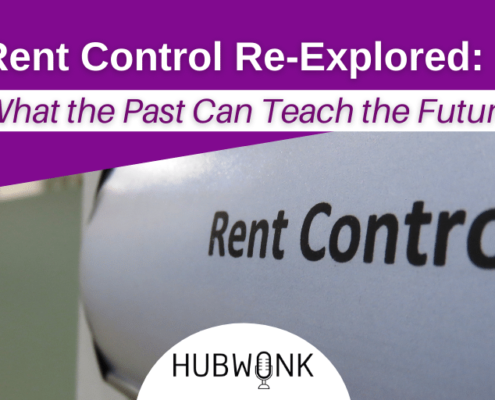
Rent Control Re-Explored: What the Past Can Teach the Future

Defusing Ideological Tribalism: Methods for Communicating Across Political Language Barriers
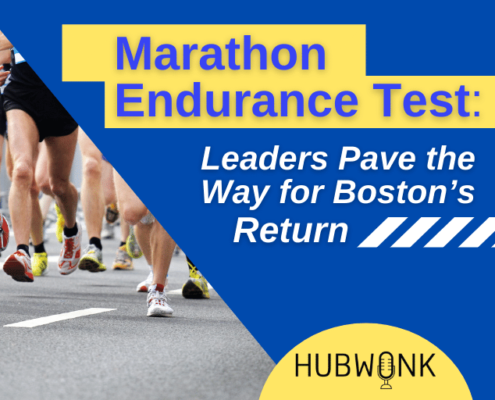
Marathon Endurance Test: Leaders Pave the Way for Boston’s Return

Economic Long Covid: Mixed Health Messages for Baystate Businesses
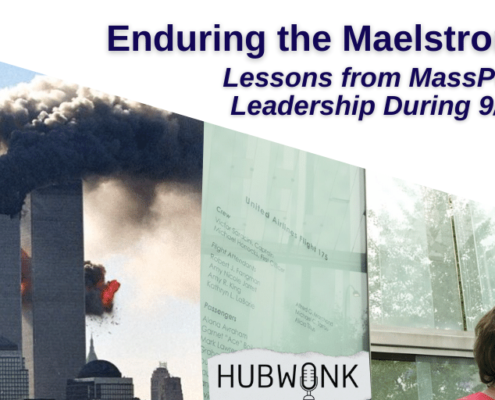
Enduring the Maelstrom: Lessons from MassPort Leadership During 9/11
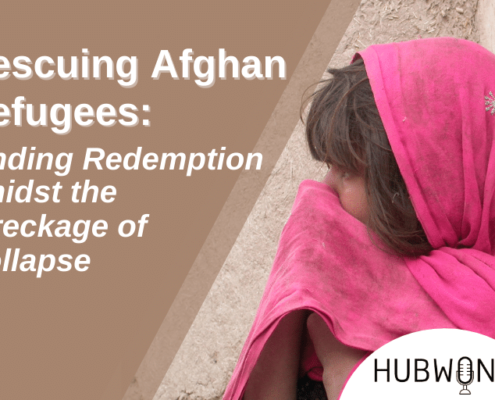
Rescuing Afghan Refugees: Finding Redemption amidst the Wreckage of Collapse

Untangling Variants & Outbreaks: Can Vaccines & Natural Immunity Outrun Delta?
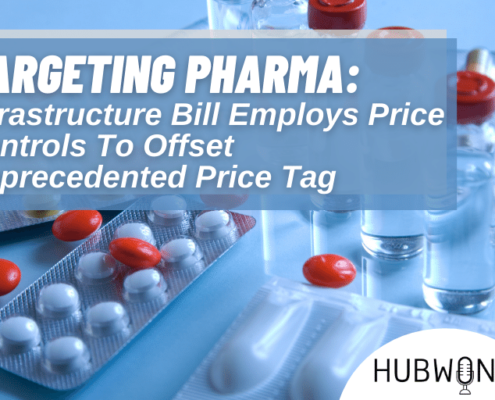
Targeting Pharma: Infrastructure Bill Employs Price Controls To Offset Unprecedented Price Tag

Examining Eviction Moratoriums: Testing Constitutional Limits of Executive Branch Power
